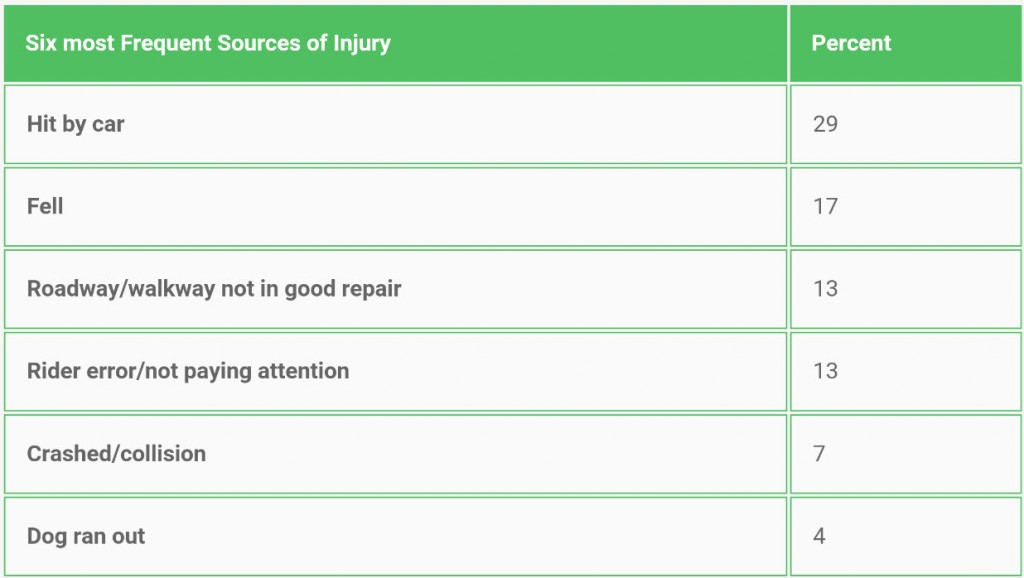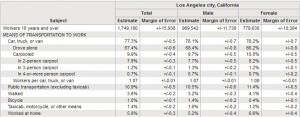Here are a few graphics that help explain the General Plan Amendment process, the flaws in the MP2035 process and an MP2035 timeline.
PRESS RELEASE
Fix the City Files Second Lawsuit: MP 2035 “Deemed to be Denied” After August 19, 2015 and Could not be Rescinded or Readopted
Los Angeles — Fix the City, a public interest advocacy organization, filed a follow-up lawsuit against the City of Los Angeles challenging its rescinding and readopting its controversial Mobility Plan 2035 on November 25, 2015.
“We believe that laws matter, public safety matters, public health matters and that quality of life matters. The City’s actions ignore the law and MP2035 fails on public safety, public health and quality of life.” said Laura Lake, a board member of Fix the City.
An earlier lawsuit was filed on September 8, 2015. That lawsuit argued that the MP2035 EIR was flawed and that the procedures followed by the City Council in amending the plan on August 11, 2015, violated the City Charter and LAMC 11.5.6. Under the Charter, if any changes are made after the Commission has approved a plan, those changes need to go back to the Commission within 75 days of the Mayor’s recommendation. August 19, 2015 was the last day to send it back to the Commission. It was not sent back and thus the law clearly states that after 75 days, it must be deemed to be denied. After that date, MP2035 needed to start over with the Planning Commission and any amendments. This did not happen, so the plan is dead under the Charter.
FTC’s first suit clearly demonstrated that the City had violated the law during its initial approval. The City acknowledged as much when it attempted to “cure” the problem by (improperly) rescinding and (improperly)readopting MP2035. Instead of going back through the Charter-mandated process and facing the public, the City has voluntarily and intentionally chosen to violate the City’s law again by trying to amend an improperly passed MP2035.
“How do you amend a plan that is legally dead? Pretend it is alive, ignore the law and hope to confuse a judge,” said Jim O’Sullivan Vice President of Fix the City. The second lawsuit challenges the clear and unambiguous Charter violations made by the City Council in taking action on a plan that had expired under city law.
MP 2035 was never lawfully adopted. It was never lawfully amended. And it was never lawfully rescinded or readopted. It is time to start over and initiate a plan that improves mobility rather creating more soul-crushing traffic.
###
There was a great turnout at yesterday’s joint MP2035 committee meeting.
The committees certainly heard that MP2035 was disliked by the majority of those in attendance. They also heard that increasing congestion and negatively impacting LAFD response times is a very BAD idea. Finally, they heard (over and over) that outreach on MP2035 was dismal.
FTC thanks all those who took the time to let the council know how they feel and also thanks those on the council who voiced their concerns.
FTC is reviewing Tuesday’s meeting outcome. We have ordered a transcript and will review that transcript along with the committee reports. An initial review indicates multiple additional procedural/legal/charter errors may be involved.
FTC will be submitting a supplemental letter from its attorneys once its analysis is complete.
As to the results of the joint meeting… It appears that PLUM approved something (not sure what yet) and that Transpo tied (again, not sure on what) so there was no recommendation forwarded to the full council.
The Los Angeles Times’ Steve Lopez attended the recent community meeting on the Rowena “Road Diet.” His article on the meeting can be found HERE.
His takeaway: That the city didn’t do its homework. (Which is the essence of FTCs lawsuit on MP2035).
His personal finding: “Traffic on Rowena can be hellish at rush hour, so I and a lot of other impatient motorists avoid it by taking alternate routes through narrow streets that weren’t built to accommodate the added flow.”
We found this segment was interesting: “Tim Fremaux of the transportation department said that in Silver Lake, the city studied what it was legally required to study, but maybe not what it should have studied. ‘We have by no means done this flawlessly,’ he said. ‘There were errors along the way.’
The problem is that FTC can’t find the legally required studies, can’t find any council file appropriating the funds, can’t find out who authorized the changes and under what authority those changes/expenditures were made.
FTC will be issuing several public records requests exploring these issues. We will be focusing on:
- Governance
- Under what authority was the Rowena road diet implemented?
- Was any environmental work completed?
- What was the cost?
- What funding source was used?
- Was there a council file opened with a corresponding vote?
- Traffic
- What traffic studies/counts exist for Rowena and connected local streets before and after the road diet was put in place?
- How has the LOS changed on Rowena? VMT? VHT?
- How has the capacity and volume changed on Rowena?
- What has the impact been on local cut-through streets?
- Public Safety – First Responders
- What have response times for LAFD been compared to before the road diet was put in place – both average response time and % of time under 5 minutes?
- What have response times for LAPD been compared to before the road diet was put in place?
- Public Safety – Accidents
- Has there been a change in the number of accidents on Rowena between car/car, car/bike, car/pedestrian, bike/pedestrian?
- Has there been a change in the number of accidents on cut-through streets connected to Rowena between car/car, car/bike, car/pedestrian, bike/pedestrian?
- How many car/bike/ped accidents have been the result of:
- Car driver at fault.
- Bike rider at fault.
- Pedestrian at fault.
- Alcohol/substance abuse.
- Distractions such as cell phones.
- Infrastructure issue (bad roadway surface/sidewalk).
- Has the severity of injuries changed for any accidents since the road diet was put in place?
- Outreach
- What outreach was done before the road diet was put in place?
- Was there a survey before the road diet was put in place?
- Has there been any surveying done of residents in the area concerning impacts of the road diet?
And… we couldn’t agree more with this statements: “When city officials come snooping around your neighborhood with plans for a road diet, don’t assume they’re going to do their homework. Get involved. Ask questions. Work out your own compromises.”
FTC is involved and we are asking questions.
Some stats that may be relevant to the discussion:
KORETZ: Thank you Mr. President. And I’m not unenthusiastic about this plan, although I don’t think it’s cooked and I think it has holes in several districts. As I told the joint committee meeting, I’m not unenthusiastic about cycling, I’m an occasional cyclist, but I’m an enthusiastic cyclist. I’m sure as an example I’m the only person that has done the California AIDS ride from San Francisco to LA on this council. I’ve ridden all over the city. I helped Bill Rosendahl in his efforts to start funding bike paths appropriately.
But I’m also a realist, and that’s why I strongly agree with the majority of residents and community groups in my district, that this stretch of Westwood, basically from Wilshire to UCLA, is not appropriate. It is a danger. We will lose crucially needed parking and turn lanes. I believe traffic will be obstructed and safety will be risked, particularly because of the large number of buses that go through that short narrow stretch, over 900 buses a day, over 25,000 cars a day.
I believe we need a north-south route, to UCLA, but I don’t think we should pick the most dangerous possible choice. And so, I believe that we should remove the section. I believe we should ask the commission and the committee to study alternatives at a future date, but I’d like to see it removed. I feel this process has completely ignored the residents of my district and their concerns, and it’s pretty unusual for the council to ignore a council member and their district concerns. So I’d ask that you not do that. it’s more difficult to amend this once it’s passed because it becomes part of the general plan, has to go back to the commission, there are a lot of extra steps.
And, while I have two amendments to propose, there is one that I know would not be precluded from being passed today, wouldn’t have to go back, and the significant portion of it says, “The street segments indicated on the networks represent potential opportunities to connect major destinations, but they are not intended to represent the full range of street options that may be considered during the implementation phase.
For example, while Westwood Boulevard is identified on the bicycle enhanced network as a plausible north-south means of connecting UCLA with destinations to the south, parallel north-south corridors maybe substituted to implement Westwood bicycle enhancements and provide an alternative connection to the city network based upon more detailed operational studies and community engagement.
So it would not remove Westwood, it would provide us the option later to remove it and substitute a route, if it can be found, that is more acceptable to the community and makes more sense after we further studied it. So, I would ask that we pass that amendment. If not, we can hear a more dramatic amendment that would actually mandate removing Westwood, with or without alternatives, but I think this one is pretty innocuous and I see no reason why we couldn’t include it now and move it forward.
Fix The City has submitted comments on the draft Mobility Element. The comments focus on the inconsistencies between the proposed Mobility Element and the City’s Framework Element. It also focuses on the potential for parking intrusion into neighborhoods and growth-inducing aspects of the plan.
FTC comments can be found here.
FYI. The latest official transportation usage statistics are shown below:




